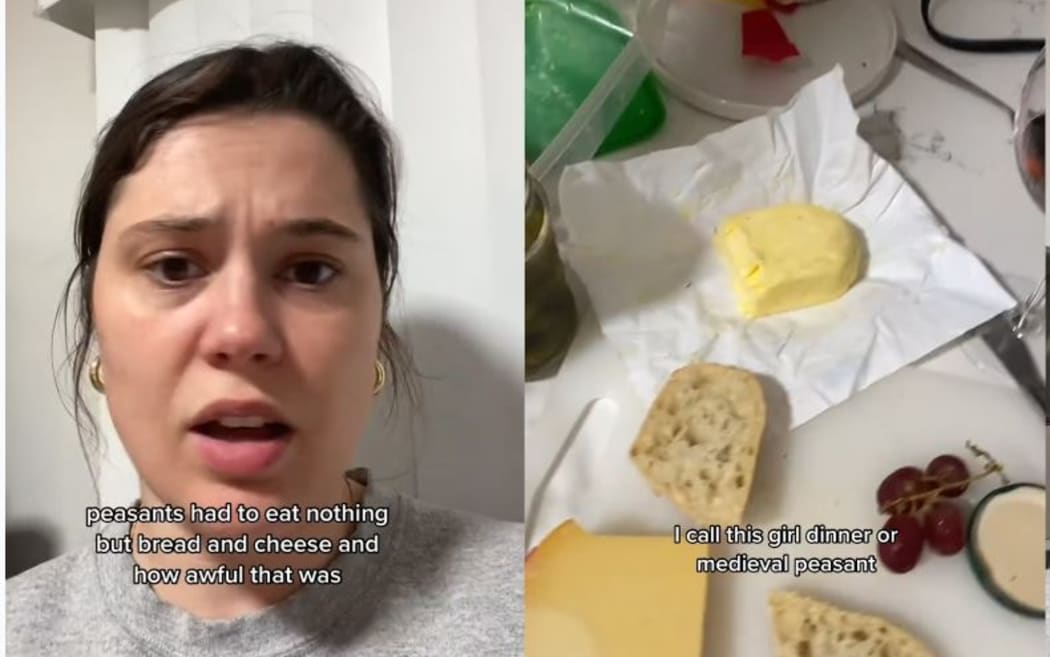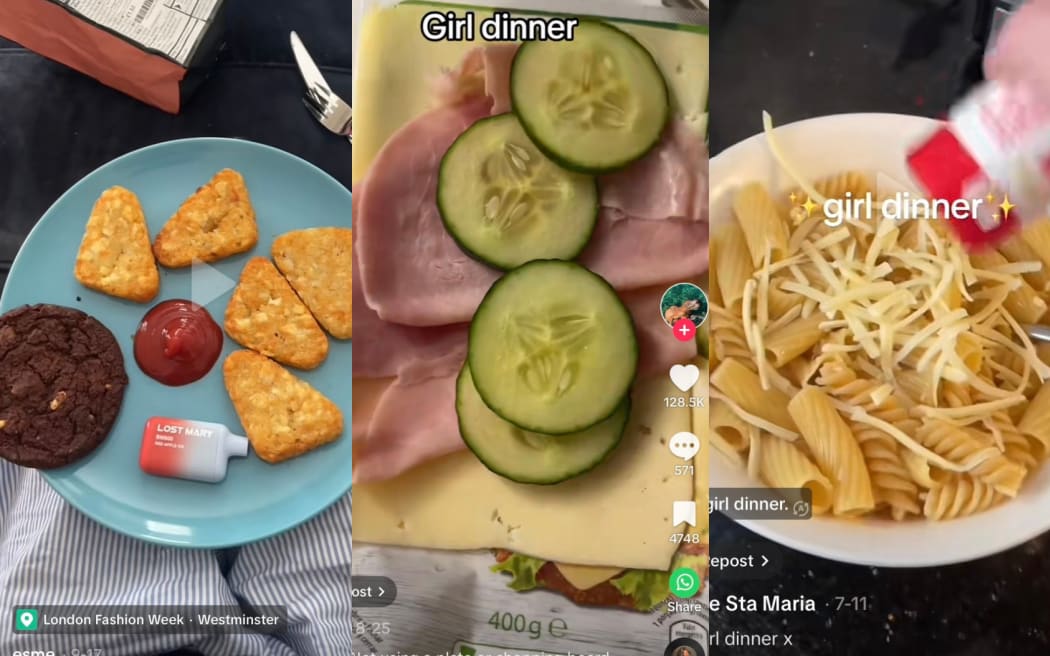Most trends on social media, have their moment in the spotlight, then the next one comes along.
But some trends catch on and stick around. One of those is ‘Girl Dinner’.
In May Los Angeles TikTok user Olivia Maher (whose profile says “Creator of Girl Dinner”) posted a video of her dinner. It consisted of several types of cheese, a couple of slices of bread, cornichons and grapes haphazardly arranged on a plastic chopping board. She likened it to what medieval peasants would have eaten.

Girl Dinner Photo: Screenshot
Since then, ‘Girl Dinner’ has taken on a life of its own, with hundreds of thousands of people showing off their dinners, alongside a 10-second jingle which just repeats the phrase “girrrrrrl dinnnnnerrrr, girrrrlll dinnnerrrr, girrrrrrl dinner”.
There have been plates of hash browns with tomato sauce and a cookie, a can of coke with nachos and cheese, kumara fries with mayonnaise, boiled eggs with a couple of strawberries and a cheese stick.

Girl Dinner Photo: Screenshot
It looks disorganised, effortless, and insubstantial. Which is exactly what it’s supposed to be.
On the surface the ‘Girl Dinner’ phenomenon is just fun and silly, but gender experts say behind the trend lies a reclaiming of the use of the world ‘girl’ - often used to demean or belittle women - and a freeing of societal expectations that women are the ones to nurture, provide for others or cook the family meals.
Founder and CEO of She’s a Crowd in Melbourne, Dr Zoe Condliffe has a PhD in digital feminism and spoke to Culture 101’s Perlina Lau about why Girl Dinner has taken off.
“I would call it a meme and the memeification of the word girl. And I think that with any meme, and with any form of hashtag activism or feminist activism that we see on social media, often the reason it catches on is because it is so relatable.
“So many people realise that they've all had this one specific, common experience that they hadn't previously spoken about openly, she told Perlina Lau.
It is more than just “cheese on a plate”, she says.
“It is about recognising the commonalities between our experiences and social media allowing for this proliferation of previously invisible or unseen narratives that we then all can cling on to and relate to, and it creates this snowballing or what I like to call the MeToo effect.”
The meals on display in Girls Dinner are far from the perfect food we have grown used to seeing on social media, she says.
“This kind of really sketchy, not very attractive, not necessarily nutritious meal and showing sometimes I don't have time, sometimes that's just the reality of it, is actually a much more honest and relatable experience to share, and experience to see, when we tell the truth of our lives and see how other women live.”
The word girl has also been “reclaimed”, she says.
“The use of the word girls for women, is often a way of kind of diminishing us and keeping us in our place and can be used to speak about us in a way that infantilises us.
“So, I think the reclaiming of the word girl is actually what's happening here and is actually very necessary. Just because when we reclaim a term that's been used previously against us, to diminish us … then we actually remove the power that it has over us, we take that power away.”

Girl Dinner Photo: Screenshot
The social media trend also addresses gendered labour, she says.
“Women are often socialised to be very proud of the food that we make for our families.
“And that takes time, it takes effort, it takes a lot of mental labour to think about what you're going to make, then go out and buy the groceries and then cook it and present it to the family.
“And I think that if we look at it from this kind of gendered labour perspective, I think girl dinner actually holds a lot of power in saying, actually, no, I don't have to spend all of this labour and energy, I'm a single woman, and I can reclaim my time.”

